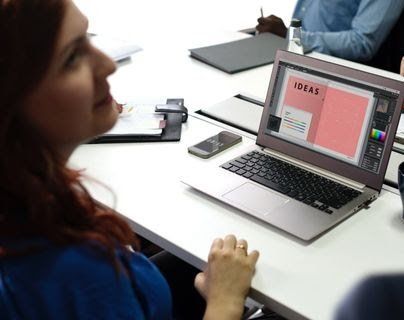It’s Tablet Time! 4 Tablets You Should Be Looking At
Asus Eee Pad Transformer 32GB – $499
Asus has been quite the busy bee in the last several years. They brought the netbook to market, they’ve made some incredible innovations in laptop design, and now they’re taking on tablets. The 10.1″ Transformer is currently Wi-Fi only, but 3G/4G add-ons are planned. At 1.5 lbs. and a hair over half and inch thick, it is very comfortable to hold for long periods (a complaint I had about the original iPad). Asus has thrown every feature you can think of in the box. Wireless N, Bluetooth, 4 in 1 card slot reader, 5MP camera, 1.2 MP front mount camera, GPS, headphone jack, HDMI-out — it’s a gadget lover’s grocery list. Most intriguing is a port that allows you to dock the tablet with an optional $150 keyboard, effectively “Transforming” it into a netbook (see what they did there?). The keyboard has its own battery, nearly doubling the tablet’s power reserves. It’s a very cool concept that may be riding on a trend (Asus has also announced the Slider, a version of the Transformer with a built-in keyboard that should be available by fall of 2011). The Transformer’s excellent 1200×800 LED screen is sharp and great for video, and it’s powerful Tegra 2 dual-core CPU and 1GB DDR2 SDRAM keeps things moving along smoothly. Watching entire movies aren’t a problem either, as its 9.5 hour battery life should allow you to fit at least two of the three Lord of the Rings movies in.
The Transformer runs Android 3.0 , which is built from the ground up to be a tablet interface. There aren’t many tablet native apps available in the Marketplace as of yet, but just about any app runs well. Android 3.1 has been released, so I expect an update in the coming months, and hopefully it will take care of a few software glitches the tablet seems to display. One being the video camera is very choppy. Recorded video stutters and distorts, making it very annoying to use. Also I noticed that when using the keyboard dock, the tablet occasionally freezes and becomes unresponsive. As I said, these seem to be software glitches from a 1st-gen product, so I’m sure they will be corrected by updates.
| Pros: | Inexpensive
Lots of features Great Screen Long battery life Dockable |
| Cons: | No current 3G/4G support
Video recording poor Docked performance issues |
Apple iPad 2 32GB – $599
Apple showed the world what a tablet should be like, and they got it right. They’re projected to sell 40 million iPads in 2011. Some blame this huge following on a cult-like religious experience , others say “when you build something that works, people buy it.” It definitely does work. Apple’s design team has made the iPad2 thinner and lighter than it’s predecessor. While the specs are a bit behind of some the other tablets on the market (only 512MB of RAM, a “mystery megapixel” camera that takes poor photos, etc), its new A5 processor is very fast, and the interface is tight. Nuances such as the “micro-animations” make it feel like a polished product, with every touch feeling like you’re actually doing something. The tablet is completely sealed, which simultaneously looks great and cuts off your expansion paths…something that will always annoy me about Apple products.
3G and 64GB versions are available, and since you can’t add memory to it, you may want to consider going higher end to future-proof yourself. Unfortunately, the top of the line can reach a steep $830. You also have to factor in that everything costs extra with Apple. Apps are .99 or higher, accessories seem to cost twice what everyone else charges…it’s like there’s an Apple tax anytime you buy hardware from them.
The iPad 2 itself is an experience. Easy to use, crisp and vibrant display, and with the weight factor from the original iPad fixed, it’s easy to hold. It’s the de facto tablet at the moment, and with good reason. There are plenty of apps to keep you busy, and it’s just plain fun. I only have 3 complaints: poor photo quality, constant pop-up windows — it seems like I am closing notifications at every turn, and the lack of Flash support (which makes me use apps instead of the web browser to view certain sites). There is a work-around for everything but the photo issues, to which Apple’s response is “the camera is designed for video, not stills.” I don’t see me taking a lot of photos with a tablet anyway.
| Pros: | Lots of Apps Great Screen Long battery life Nice design 3G Availability |
| Cons: | Poor camera Expensive No expansion ports No upgrade path No Flash support |
Acer Iconia 16GB – $449
Acer comes in on the lower end of the scale with the Iconia line. The build quality of the Iconia is solid and sturdy. At 1.7 lbs. it is the heaviest of the tablets reviewed, and hands will begin to feel the strain after holding it upright for a while. The screen looks to be the best of the bunch — the 10.1″ 1200×800 WXGA touch screen is among the sharpest tested, and like the Asus Transformer, it’s packed with features. You’ll find Wireless N, Bluetooth, a card reader, HDMI, GPS, and a dual-core Tegra 2 processor packed inside the case. Memory on this model is limited to 16 GB of DDR2 SDRAM, with a 32GB version available for $100 more. A keyboard dock is available for another $69 and also acts as a charger (but lacks a battery). The Acer runs Android 3.0, and photo quality from it’s 5 MP camera is actually pretty decent. The front facing 1.2MP camera allows for video conferencing, which works smoothly. Battery life is sufficient at 8 hours, but it’s a bit lower than the competition. If you’re looking to roam free, 3G service is available on the European model, but hasn’t quite made it to the states yet. Tethering from your smartphone can get around this in a pinch.
The Iconia’s touch screen works well — almost too well. I noticed I could manipulate things on the screen without even physically touching the glass. I wasn’t able to find a control to adjust the sensitivity, but I noticed other people mentioning the same issue. It appears to be something that can be fixed with a software patch, so stay tuned.
I enjoyed a couple of the included apps. It’s nice to see some non-junkware being installed on these tablets. SocialJogger displays your Facebook and Twitter accounts on the same screen in an attractive interface. Need for Speed: Shift was also a nice touch as the racer does a great job of showing off the tablet’s horsepower.
I liked the Acer Iconia. It’s a great entry-level tablet, and can grow with you as your needs evolve, but those upgrades can get pricey.
| Pros: | Sturdy design Best screen Expandable Great apps included Good camera |
| Cons: | Low RAM for price Upgrades get expensive Over-sensitive touch screen |
Blackberry Playbook 32GB – $599
Blackberry is the father of the smartphone industry, and recently they’re trying to make waves with tablets. Their first attempt, the Playbook, isn’t half bad either. For those that think a 10″ screen is too large, the Playbook comes in a 7″ 1024 x 600 form factor which makes it a bit more portable. Blackberry’s new proprietary operating system with QNX technology is very sharp and polished, with Flash and HTML 5 support built-in. Weighing less than 1 lb., this tablet is easiest on the hands for extended viewing.
The hardware is pretty impressive for such a small package. The Playbook sports a dual-core processor, 1 GB of RAM, 32 GB of storage, Wireless N, Bluetooth, HDMI, and GPS, but no external memory card slot. Blackberry’s plan is to have all expansion options connect via Bluetooth (they’ve already released a Bluetooth keyboard option), but this may be a major setback to some. There is a micro-USB port for connecting to a computer when needed.
The physical buttons on the tablet are…not so good. They’re hard to press, and the power button is in a place that can cause trouble when adjusting the audio controls. The touch screen on the other hand…whoa! It supports 4 finger swipe commands, and I have to say it’s pretty slick. The built-in apps are standard Blackberry fare, so if you had one of their phones, you’ll recognize the prettier versions of the apps on the tablet. The camera is rated at 5MP back, 3MP front, and both are grainy…I would have expected better from a business oriented tablet. 3G support is available from multiple carriers.
If you are a Blackberry fan, the Playbook will make you feel at home. It’s interface is top-notch, but it’s hardware implementation is a bit behind the competition, especially with its $600 price tag. It’s still one of the best 7″ tablets out there, and worth a look if work in an all “Blackberry shop.”
| Pros: | Excellent Screen Great Interface Expandable |
| Cons: | Expensive Poor camera Poor buttons No external storage slot |
Up and Coming
We are in the infancy of the tablet revolution, so expect a lot of new products in the coming months. Hardware specs will probably be similar for at least the next 6 months, with form factor and design being the key differences. HP is releasing a tablet based on WebOS soon, and if the previews are any indicator, it could be a major player. HTC has also recently released a new 7″ tablet with a 1.5 GHz processor that looks promising. Microsoft is late to market again, and I feel they’re going to miss the boat in the same way they missed the smartphone train. Microsoft is creating Windows 8 to be tablet compatible and expects a product by late 2012.
In the mean time, if you are in the market for a tablet, it’s a good time to buy as we’re at the beginning of a new hardware platform cycle, so you won’t get the obsolescence blues for quite some time.








